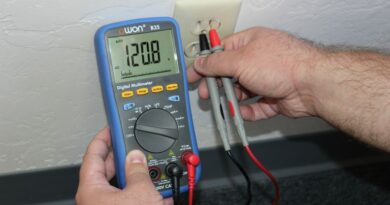DIGITAL MULTIMETERS: DISPLAY DIGITS, COUNTS & RESOLUTION
The majority of handheld digital multimeters, or DMMs, have three-and-a-half-digit displays and the three numeric characters on the right side show values between zero and nine; however, the leading digit, known as the half digit, can only be either zero or one. These types of digital multimeters can display numbers from zero up to one thousand nine hundred ninety-nine, which is why they are commonly called two thousand-count digital multimeters.
Resolution
A digital multimeter’s resolution relies on the maximum number of analog-to-digital converter, or ADC, counts that occur during a full conversion; e.g., a two thousand-count multimeter with a three-and-a-half-digit display has a theoretical resolution of point zero five percent, but a practical resolution will also take into account the number of least significant counts, much like the accuracy rating.
Generally the direct-current voltage measurements take advantage of the analog-to-digital converter’s full-count capability because signal conditioning, which uses resistive dividers and filters, isn’t especially complicated. Some functions may be limited range-wise or may need signal conditioning, which will limit the analog-to-digital converter’s input range, resulting in lower resolution.
Counts
Quality high-resolution handheld digital multimeters typically have a two thousand-count, four-and-a-half-digit display, enabling them to display values between zero and nineteen thousand nine hundred ninety-nine. Four-thousand count multimeters have a four-and-three-quarters-digit display and can display values from zero to thirty-nine thousand nine hundred ninety nine. Bridging the gap bewteen these two are the three-and-three-quarters-digit displays, or four-thousand count digital multimeters. (Note that a number of digital multimeters will leave the leading digit black when it is zero.)
In most cases the larger the number of counts, the higher the resolution; and the higher a digital multimeter’s resolution, the higher its accuracy. Other design factors come into play with regard to a digital multimeter’s accuracy including the accuracy of the analog-to-digital converter, noise level, component tolerances, and stability of internal references — so don’t assume that a four-and-a-half-digit multimeter is ten times more accurate than its three-and-a-half-digit counterparts. Furthermore, because digital multimeters have automatic polarity detection, they are able to display negative values corresponding to the range of their positive values, i.e. a three-and-a-half-digit digital multimeter will shows values from zero to one thousand nine hundred ninety nine as well as values from negative one thousand nine hundred ninety-nine to zero.
